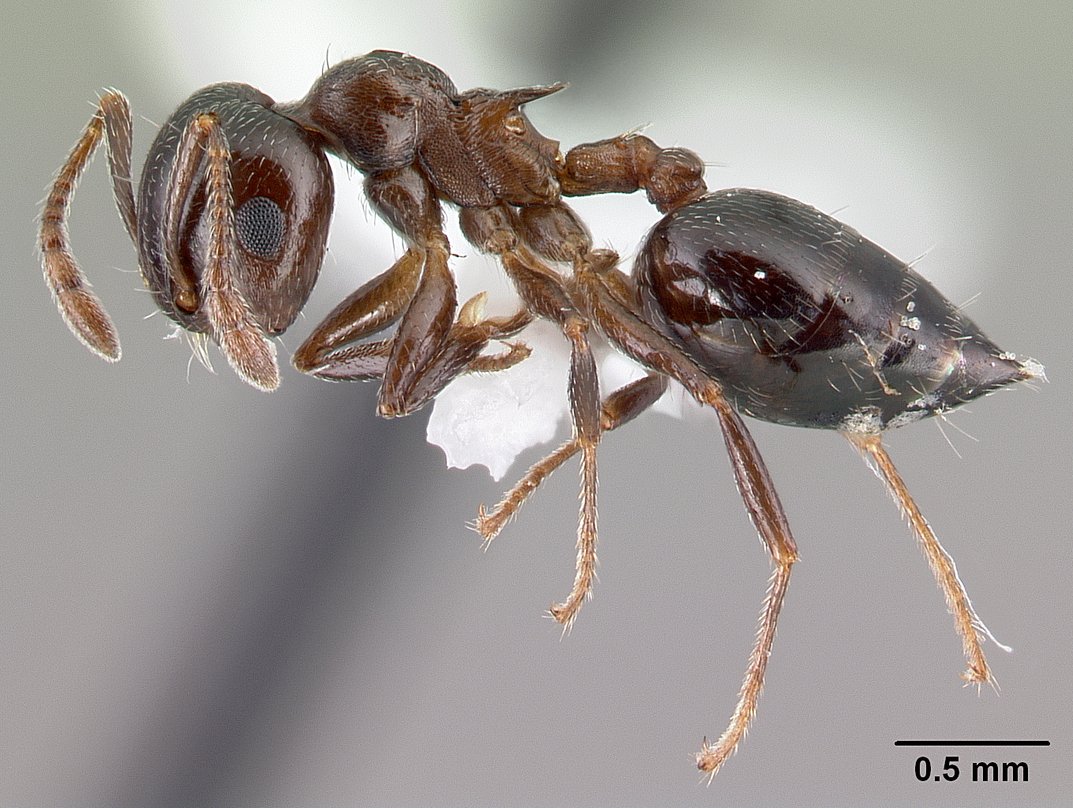Map Snapshot







13 Records
Status
An ant of various forested and open-area habitats including hardwood forests, mixed woods, mesic woodlands, fields and field margins, edge habitats, and generally open or semi-open areas (see Frye et al., 2014).
Seasonality Snapshot
Source: Wikipedia
| Crematogaster cerasi | |
|---|---|

| |
| profile view | |

| |
| dorsal view | |
| Scientific classification | |
| Domain: | Eukaryota |
| Kingdom: | Animalia |
| Phylum: | Arthropoda |
| Class: | Insecta |
| Order: | Hymenoptera |
| Family: | Formicidae |
| Subfamily: | Myrmicinae |
| Genus: | Crematogaster |
| Species: | C. cerasi
|
| Binomial name | |
| Crematogaster cerasi Fitch, 1855
| |
Crematogaster cerasi is a species of ant in tribe Crematogastrini.[1] It was described by Asa Fitch in 1855.[1]
Physical characteristics
[edit]Crematogaster cerasi are identified by the long hairs found on their shoulder and dorsum. Unlike others from the genus Crematogaster, there are only 3-5 hairs on each of these areas. Ridges on the thoracic dorsal are also indicators of a Crematogaster cerasi. Ridges are short and discontinuous. The bodies of the ants are unicolored.
-
queen
Diet
[edit]Crematogaster cerasi are omnivorous. This means that they have the ability to eat both non-vegetarian food as well as plants and seeds. They eat dead bugs and smaller insects. They also consume nectar of flowers.
Predators
[edit]Predators consist of spiders, rodents, beetles, birds and sometimes but not often, black bears. Having this many known predators makes them a necessary part of the ecosystem.
References
[edit]- ^ a b "Crematogaster Lund, 1831". Integrated Taxonomic Information System. Retrieved 25 October 2014.


